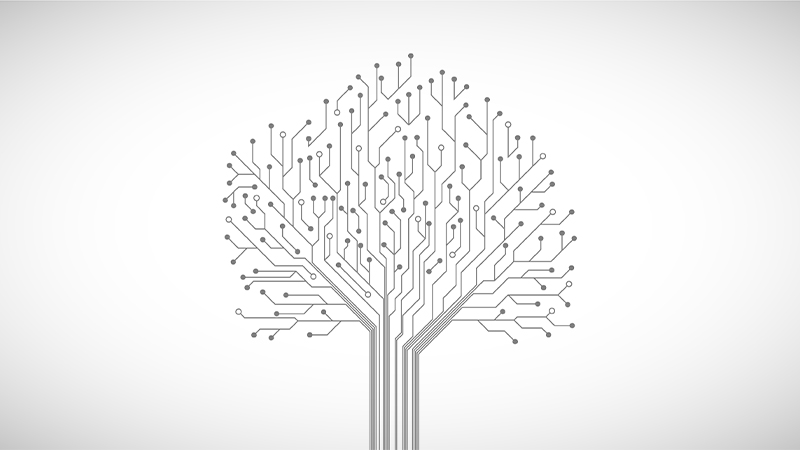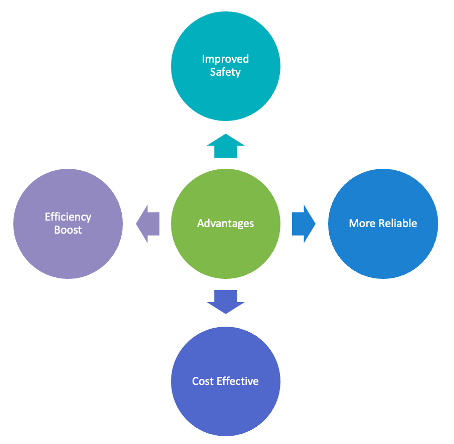
Digital Transformation in Natural Resources Industry


As the world around us is transforming, digitization is emerging as a key driver across a wide range of key economic sectors such as product and service industries.
Digital transformation of business requires a systematical approach, changes in leadership style, and a completely new mindset in the production chain. "Digitization" is defined by Gartner as leveraging digital technologies to change business models and provide new revenue and value-producing opportunities.
Digitization in the natural resources industry will be a force that can change the nature of companies and their interaction with employees, communities, government, and the environment at every step of the value chain.
From mineral exploration and valuation, through mining, ore processing, and metals production, to downstream sales and distribution, digitization is blurring traditional industry lines and challenging the business models of the past.
Although the natural resources industry is capital intensive and its operations are complex, it largely has a manual physical supply chain and is still one of the last industries that remain distant from digitization and automation. However, since the mining slump in the past few years coupled with the slowdown in major commodity prices and rising labor rates, this trend is changing and the industry along with the major global players are adopting new technologies and automation.
Major miners are now increasingly procuring new technology products such as automated heavy equipment, automated blasting, and drones. Following this trend, major suppliers are also changing, modifying, and innovating new and automated mining consumables. Further, mining companies are increasingly using automation, data analytics, and algorithms to solve complex and previously intractable problems related to their value chains while curtailing costs and increasing mining productivity.
The progression into digitization creates an opportunity for mining companies to fundamentally change the business model, unlocking much-improved customer service and customization, reducing costs in the value chain, improving safety, and creating opportunities for new businesses.
The natural resources industry has experienced some positive episodes lately, with the increase in commodity prices and the anticipated rise in the major commodity prices over the next year. This has, in turn, led to a growth in the mining industry, and consequently, reflected in the rise in sales of mining consumables and equipment.
However, the industry still faces an array of challenges such as fluctuating demand from major world economies, rise in inventory levels, increase in capital expenditure, and increased reconstruction of mining regions.
- Autonomous Haulage Systems (AHS) and Robotics
Major mining suppliers have been increasing spending and allocating more of their resources to transforming their equipment from manual to semi and fully automated. Data generated from autonomous machines is further analyzed and used to increase operational efficiency and performance in mines.
Mining major Rio Tinto has invested over $2 billion in the installation of AHS trucks and robotics. The company has reported a 37 percent increase in per-person productivity and has reduced well over 25 percent of the operational costs.
The AHS truck fleet is forecast to drive reductions in operating costs at Australia’s iron ore mines by up to $0.6 per ton. In the long run, haulage, which accounts for almost 34 percent of the total operating cost, can be reduced significantly by using AHS.
Companies such as Komatsu have aggressive expansion plans for their AHS in the next ten years. The company has deployed more than 200 driverless trucks, excavators, and other heavy equipment at mines in Australia and North and South America. Data generated from the autonomous machines is then further analyzed and used to increase operational efficiency and performance in mines.
- Unmanned Aerial Vehicles (UAV): Drone Technology
In the mining industry, ensuring safety compliance at a much cheaper price has emerged as one of the major advantages of drones. It helps collect large volumes of high-quality data for exploring, surveying, and 3-D mapping, which would not have been possible without it.
The technology processes maps and data much more quickly than traditional methods, allowing for almost instant analysis. It can connect in real-time with other mining operations technology, allowing employees to make decisions faster and with better information than in the past.
- Some key benefits of using drone technology
-
Improving safety:
Drones are used to collect information and collate data points from areas that are inaccessible or hazardous to human personnel. It is also centered on the fact that drones can reach places where reaching would be impossible or difficult without involving significant manual risk. Drones help safeguard human safety in risky and hazardous operations.
-
Cost savings through visual monitoring:
One of the major benefits of using drones in mining is that the cost is cheaper than traditional helicopters, which cost almost $2000/hr, whereas drones can process the same data with more efficiency at one-tenth of the cost.
- Inspection and surveillance:
Companies can use drones to obtain real-time 3-D mapping and information concerning equipment instructions along with surveillance data on long stretches of infrastructure such as power and rail lines.
- Accelerating data collection:
Drones can help the mine operators to collect data in a matter of days that previously would have consumed weeks to collate, besides delivering new information from inaccessible areas, which was not feasible before.

These advantages render drones an ideal solution for increasing scalability, efficiency, and cost-effectiveness in surveying mining regions.
- Data analytics and decision support:
Data analytics helps improve processes and reduce operational costs and losses. Mining companies are increasingly using data analytics to ensure the safety, sustainability, and profitability of mines in both the short and long term.
The capture of past data from diverse mines and topographies, both from underground and open cast mines, provide actionable insights for real-time planning, productivity, workforce management, and cost rationalization in new mining projects.
A recent survey by a mining journal, which included 10 of the Top 20 global mining companies, illustrated that big data analytics would spur the next wave of efficiency gains in ore extraction, analysis, transportation, and processing by enabling faster and better-informed decisions at all levels.
Benefits of data analytics can be derived at every stage of the mining cycle
- Improve the efficiency of mines: The mining process becomes faster with automated and agile processes implemented at multiple operating levels such as ore extraction, processing, separating, and concentration.
- Improve the supply chain: Data analytics using past data can help identify areas of inefficiency and provide multiple windows for improvement.
- Smart collaboration: A single source of data across the organization improves collaboration between various departments, which facilitates newer collaboration models with OEMs, operators, and service providers.
- Safety and security: By capturing operational, people, and sensor data, big data can provide actionable insights based on real-time monitoring of people, the environment, and equipment. The analysis can also help identify risks such as a tunnel collapse or incidents of near misses, thus ensuring safer mining operations.
- Smarter procurement: A data-driven system simplifies managing and monitoring current and future needs of spares and services, and optimizes inventory of spare parts. Big data renders price negotiations and spend analytics speedy and efficient while reducing overall procurement costs.
- Business intelligence: It helps identify the real cost-driving areas, enabling faster decision-making and improved performance.
- Data analytics can be used in
a) Mining trucks
-
Typical parameters that influence the operating costs include engine oil pressure and temperature, transmission oil pressure and temperature, and brake changing pressure.
-
Using data analytics, predictive patterns can be identified and models can be developed for regular maintenance and replacement of parts to ensure optimum performance at the least cost.
b) Load-Haul-Dump Machines (LHDs)
- The major variable to be captured in LHDs includes average tons moved, load cycle, average operating hours, average idle time, throughput rate, and utilization percentage.
- These variables can be analyzed using big data and the operating efficiency of the LHDs can be enhanced using an average base.
- Digitally enabled technologies
The major technologies include remote operations centers, digital simulation training/learning, connected worker/mobile devices, logistics control towers, and virtual collaboration. Connected mobility, VR, and AR technologies can be used to empower and monitor field workers. Employees can benefit from on-demand, real-time push and pull information and use mobile and wearable technologies such as tablets, wearable glasses, watches, and vital trackers to interact with sensors, robots, and other systems around them.
Some examples of digitally enabled processes include:
a) Auto stem technology for blasting;
b) Wireless initiating systems; and
c) SmartCaps technology.
- Digital future of the mining industry
Some of the undertakings that will drive the mining industry are mentioned below, not necessarily in order:
- Drone-captured geological data;
- Autonomous equipment: haulage, drilling, and loading;
- Sensors to capture real-time data;
- Data analysis of the captured raw data;
- Wearable field operational safety devices;
- Drones for inspection and maintenance;
- Remotely connected workforce; and
- Integrated operating systems.
Conclusion
The direct benefits of automation and digitization will be significant and will be greater in value when the data are collected and used to plan, optimize, and integrate all activities across the value chain. To leverage the automation of core operations, mining companies will need to rethink the processes of generating and utilizing the information.
To thrive in the future, mining companies should imbibe digital transformation and focus on the following strategies to gain a significant advantage:
- Developing and managing a digital strategy;
- Automating most of the operations;
- Capturing and analyzing data;
- Adopting changing technology and processes; and
- Connecting the workforce remotely.
Related Insights:
View All
Get more stories like this
Subscirbe for more news,updates and insights from Beroe






